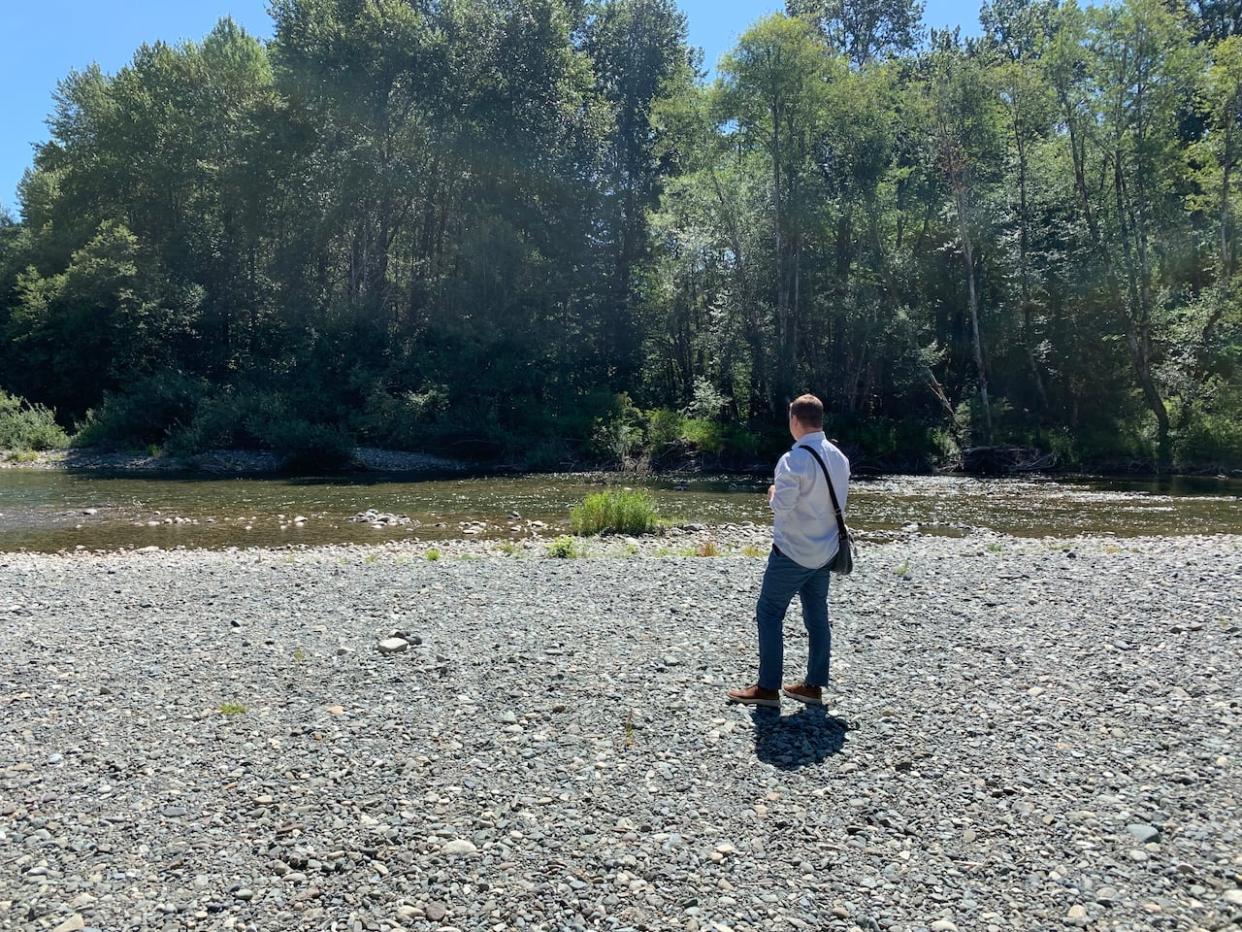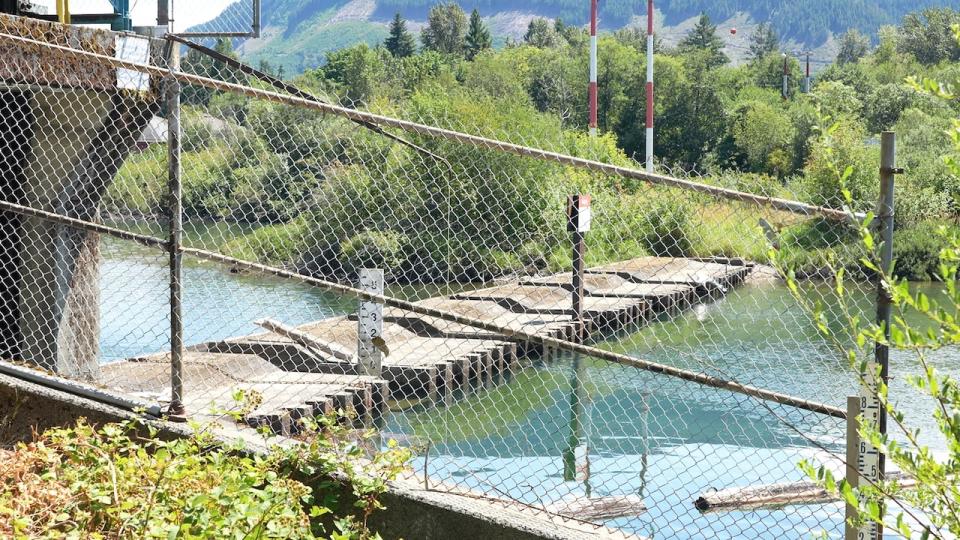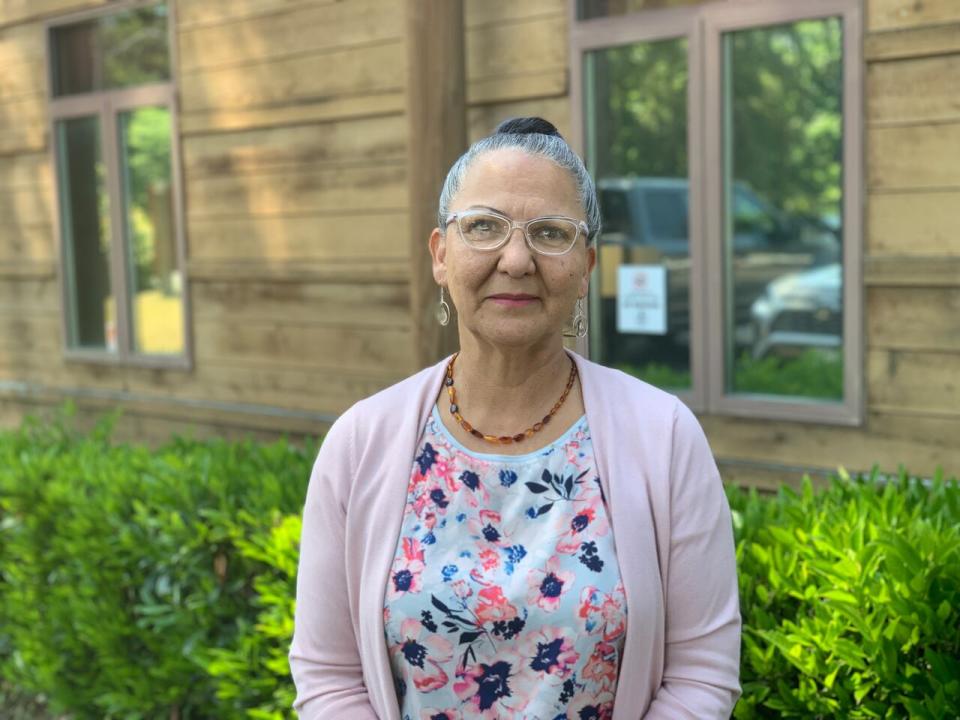B.C. budget provides final piece of funding for Cowichan weir

- Oops!Something went wrong.Please try again later.
Relief washed over members of the Cowichan Watershed Board on Thursday, when they heard about one line in the province of British Columbia's latest budget: $14 million dollars to replace the Cowichan weir.
The board, which is a partnership between Cowichan Tribes and the Cowichan Valley Regional District, has a "shovel-ready" plan to build a new weir — which it says is necessary to adapt to the dryer summers caused by climate change.
Aaron Stone, who chairs the Cowichan Valley Regional District and co-chairs the watershed board, called the budget "just excellent, exciting news … really that last piece of funding that we needed to move the conversation forward."
A weir is a dam-like structure, which stores water so it can be released in a controlled manner. Because weirs are smaller than dams, they don't flood the space behind them.

The current weir that controls the flow of water into the Cowichan River is pictured. Built in the 1950s, advocates say it is no longer sufficient to manage water levels — which are increasingly low in the summer because of climate change. (Claire Palmer/CBC)
For nearly 70 years, there has been a short weir controlling the flow of the Cowichan River, in a region just north of Victoria, B.C.
The weir stores water in Cowichan Lake; it's controlled by private company Paper Excellence, to support its pulp mill in nearby Crofton.
In the summers, it slowly releases water into the river, to ensure a continuous flow until autumn rains replenish the supply.
But in dry years, that flow can be so low that it's not enough for the salmon that live in the river.
The low flow can also have negative impacts on the region's ecosystem, water supply and recreation activities.
Last summer, hundreds of salmon and trout died in the river, which Fisheries and Oceans Canada blamed on "stressful environmental conditions"
Some years, pumps are needed to move water from the lake to the river to ensure steady flow.
According to the Cowichan Watershed Board, low flow conditions are 80 per cent more common than they once were.
The new weir will be taller than the existing one, meaning more water can be stored during rainy season, allowing for higher flows in the summer.
Salmon, and the river itself, have both nutritional and cultural significance to the Cowichan people, who have lived in the region for thousands of years.

Lydia Hwitsum, chief of Cowichan Tribes, says it's positive news that the province has offered funding to replace the Cowichan weir. (Kathryn Marlow/CBC)
It's why Cowichan Tribes has long advocated for the new weir.
In a statement sent to CBC News, Cowichan Chief Lydia Hwitsum said she is pleased with the news of provincial funding.
She called it "a positive step for this essential project to sustain the health of the Quw'utsun Sta'lo."
Quw'utsun Sta'lo (pronounced: cow-WUT-sin STOT-low) is Hul'q'umi'num' for Cowichan River.
"We look forward to the next steps with the province in advancing liability protection and a collaborative approach to water governance that respects Cowichan Tribes inherent rights," said Hwitsum, who co-chairs the watershed board with Aaron Stone.
Licensing still in question
While the $14 million closes the gap on funding for the project — Cowichan Tribes previously secured funding from the federal government — there is one last thing that needs to be sorted before the project can go ahead: licensing.
Projects like weirs are generally managed using water licences the province sells to private bodies, like Paper Excellence.
The licence holder manages the weir and the water flow, but is also liable in the event of any issues with the weir and its operations.
Hwitsum has said in the past that this is an opportunity for the province to rethink how it defines and distributes water licences.
Stone agrees — and is confident it can happen.
"I feel like for the first time we have a government, and a working group … in Paper Excellence, the regional district and Cowichan Tribes and all want to work together to find a way to solve this."
He added their goal is the health of the river and the ecosystem, and the economy it supports — and that the most important element is the rights of Cowichan Tribes.
There is no timeline yet on when licensing will be figured out.
In a statement to CBC News, a spokesperson for the Ministry of Water, Land and Resource Stewardship said "with capital funding secured and designs for the new weir complete, next steps include determining the ownership and licensing structure for the new weir."

